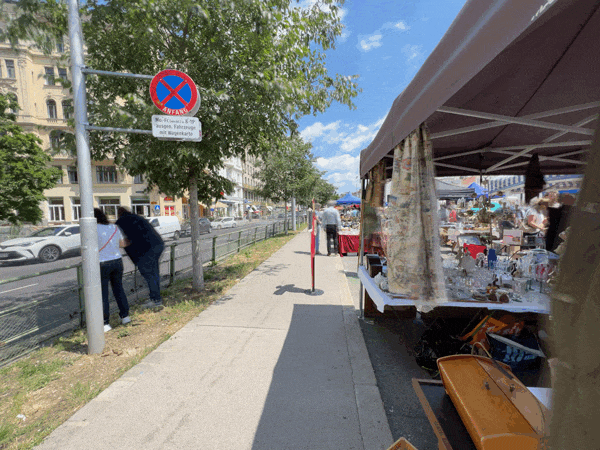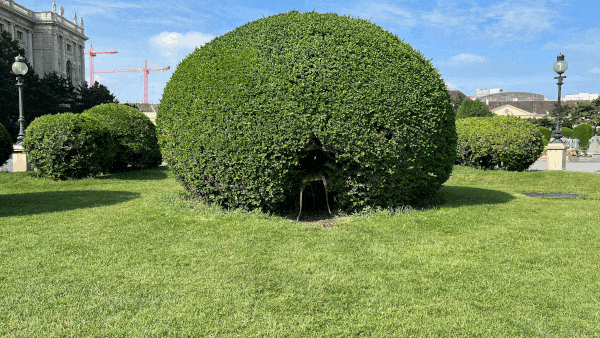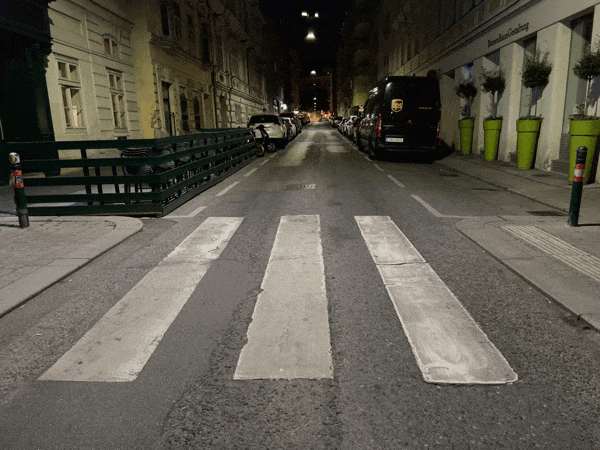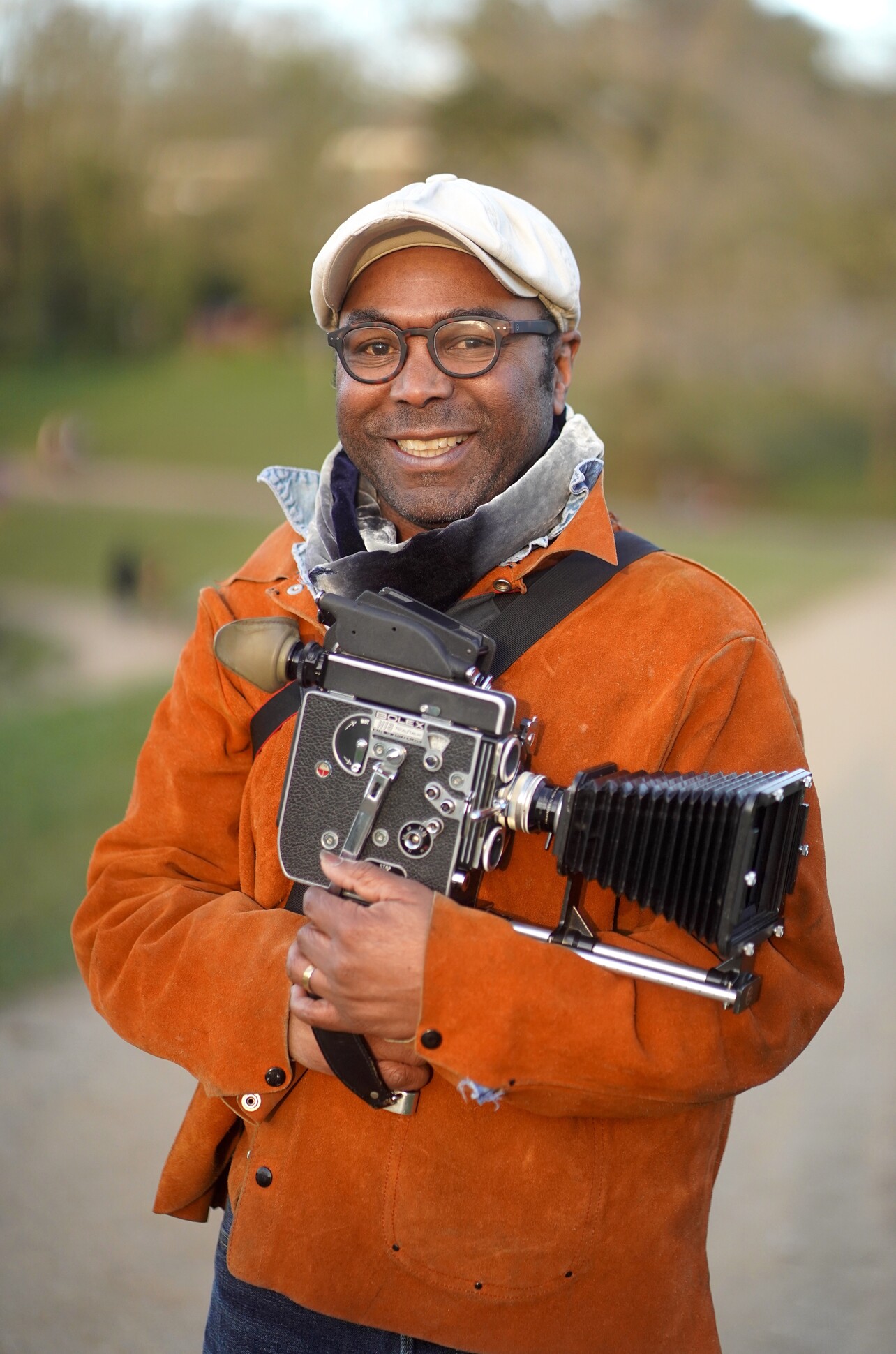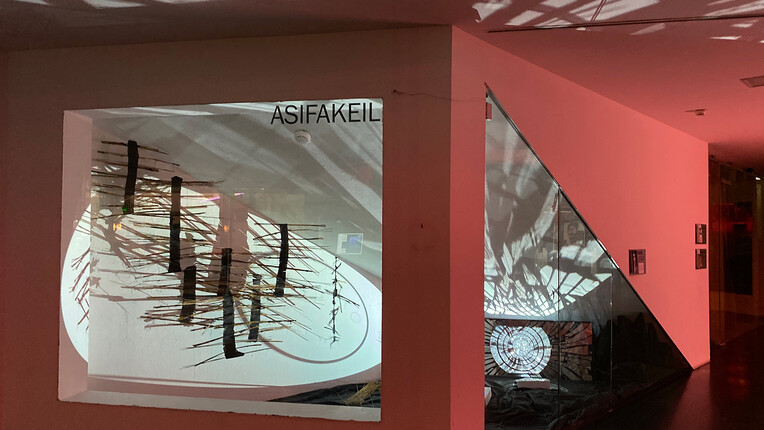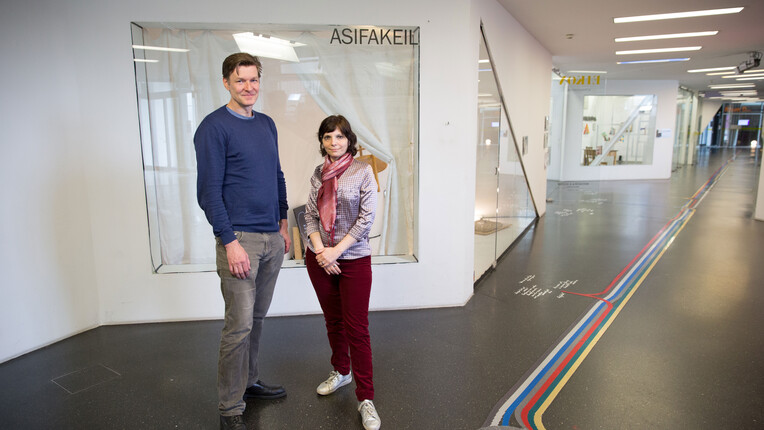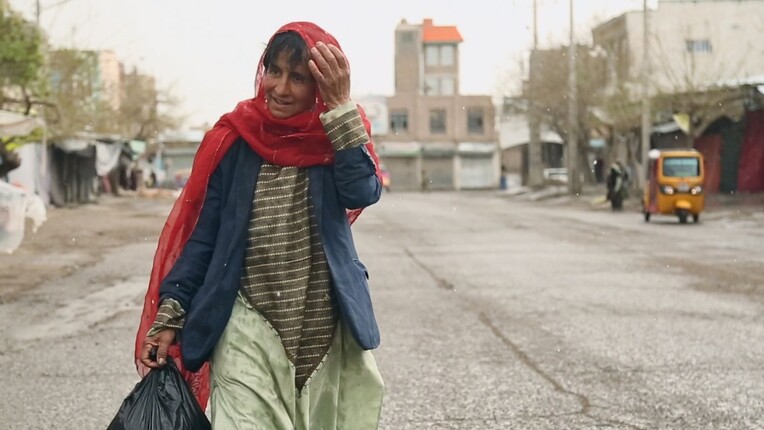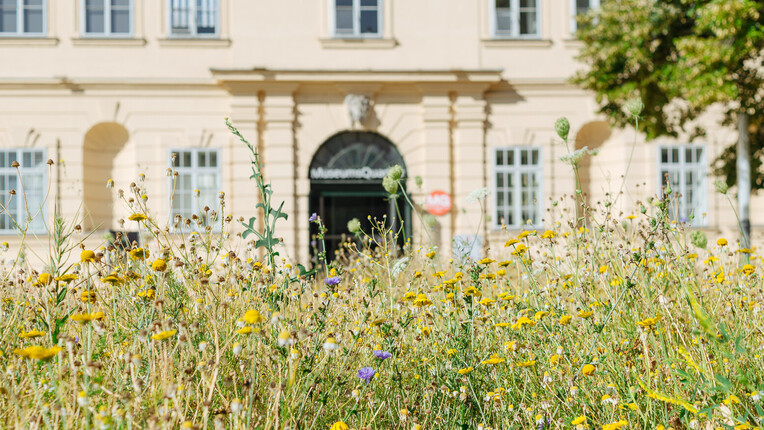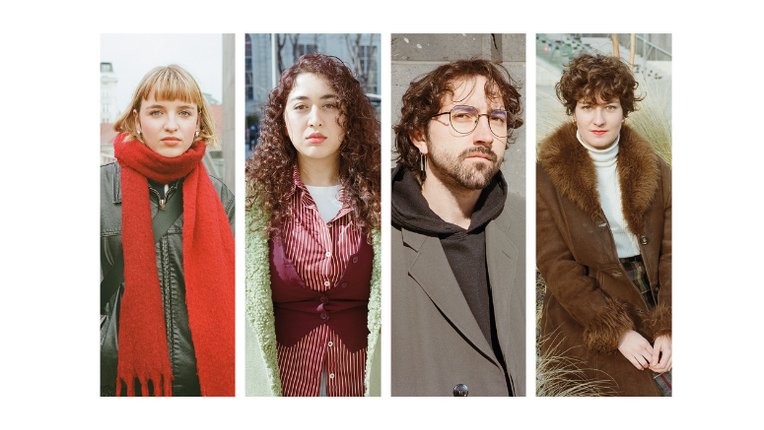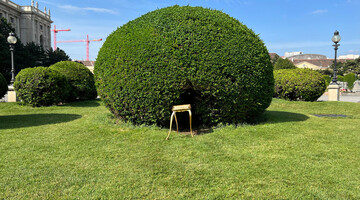
The Animistic Animation Art of Osbert Parker
A talk with animation filmmaker and Q21 Artist-in-Residence Osbert Parker.
Three times BAFTA nominated and award winning Osbert Parker, is perhaps best known for using innovative film techniques, that combine photo cut-out animation with objects and live action to create one-of-a-kind imaginary landscapes in mixed media short films, commercials, TV entertainment and online content. He was Q21 Artist-in-Residence in May and June 2022 and worked on ADVENTURES IN ANIMATION which is now on display at ASIFAKEIL. In conversation with Stefan Stratil (ASIFA Austria), Anneliese Blechner, Helmut Blechner and Françisco Valença Vas he talks about his work.
Stefan Stratil: Osbert, what are you doing?
Osbert Parker: I am living completely in the moment. I’m in this wonderful Brazilian restaurant, having some great food, drinking some great cachaça, I’m with some great people and we’re talking about music, art, inspiration and life and for me this whole residency is about living in the moment and responding to the city, different people that I meet. I’m also making animations on the side, filming everyday but the important thing is to enjoy my time here because I am incredibly grateful for this amazing opportunity that ASIFA and Q21 has given me.
Stefan: You’re doing animation, how can we understand that? What is it that you’re animating?
Osbert: Most animation today is created digitally, within the computer CG & drawn (with some great results). Thankfully, there is still a lot of stop motion and some paper animation including mixed media techniques with some exciting outcomes. These are traditionally made in a dark room in a space where animators are in complete control. I’m interested in findings ways that animators don’t normally animate. I like filming on the street, using a combination of stop motion and experimental techniques with people in the shoot and the light and weather change constantly. I’m animating objects like broken tables, chairs, wardrobes and street furniture. I try to find a personality in abandoned objects and the way they move to represent different people in society which may not have a voice but we empathise with them. So, I’m working very intuitively and I honestly don’t know what the final results will be and I like that, it’s an improvisational approach to animation that I find inspiring.
Stefan: I heard you are able to animate an atmosphere?
Osbert: Ah, this was interesting. This was a challenge that Stefan gave me, because I love Fleamarkets, especially Naschmarkt. It’s not only for tourists, there are lots of fascinating characters there. I like seeing what people have collected that’s important or even precious to them one minute and then years later, it’s useless and sold for different reasons. The discarded objects are a stark reminder of materialism, society’s tastes and private possessions in a public space. Physical objects, locals, tourists, buyers and sellers collide and make an incredible atmosphere, a dialogue between the parties. I love the atmosphere, I like the energy and then Stefan said yes, but you can’t animate the atmosphere and I thought oh, he’s right and when I got home I thought why can’t you animate atmosphere? For me it was a challenge. I think I’m getting there in my animated experiments? We’ll have to see. I used to buy objects, take them away and animate them. Now I’m animating some objects at Naschmarkt with people interacting and they add an atmosphere which I could not reproduce in the studio. When I’m filming, I’m interested in trying to capture, or expose some element of truth.
When you get talking to the market sellers some are very nice and interested about what I’m doing. Then there are some, which aren’t as nice. I start by saying: can I take a picture? Oh yes, yes, no problem and then I take another picture, another picture, because animation is made out of hundreds of pictures and then they realise I’m there for a long time and that’s quite a funny situation. Curious about what I’m doing but if you overstay your welcome, they want you to leave, in case you stop buyers coming to their market stale.
Stefan: You’re shooting scenes in Vienna calling it “Adventures in Animation“ that you intend to use for your installation at the ASIFAKEIL at Q21. Are you content with your results? Is there something still missing? What is the outcome supposed to be, just the installation or also a movie?
What will happen?
Osbert: Yeah, that’s a good question. At the moment, this is work-in-progress. I am in the middle of my adventure and I don’t want it to end. If I keep thinking about the outcome I’m not in the moment and start to work to a preconceived outcome, so it’s really nice to just be in the moment and play and allow myself to discover happy accidents. I walk around with my camera and tripod and if I see something I like I will film it. Just today I found a little gate & staircase that led me down to the sewer. I’m a big fan of Carol Reed’s „The Third Man“ and I’ve always wanted to go into the sewer here to film. It was just the entrance but it really makes me laugh seeing these objects as characters come to life and the process feels exciting to me, so I hope it will excite, and engage an audience. I hope the finished film will tell different stories about different people and different situations, not just in Vienna but in different parts of the world.
Anneliese Blechner: So you mostly take pictures and put them together for an installation, or a movie..?
Osbert: Yes, I avoided answering that part of the question because I still don’t know what I’m doing with the installation, I’ve fallen in love with just filming on the streets, I wanted to show the film and the installation should be part of the same theme. Normally we show the world on a screen but an installation suggests an environment so I’m still working on that.
Stefan: Anyway I think it’s going to be a most interesting collection of impressions…
Osbert: I hope so.
Stefan: …whatever format might come out of it. You might use it for different things.
Osbert: Sometimes my art, installations and experimental animations turn into commissions like a commercial or a title sequence or commissioned film. I make things because I want to know what I am going to learn during the process. I don’t know what’s going to happen that’s why I make it.
I always ask, “What if?“, like a child: “What if you do this, what will happen?“ I think that’s why I make animations: What happens if something comes alive, how would I make it move? And the meaning is really important to me. This normally becomes clearer as I’m making the work, or sometimes during the editing process when I shape the film.
Stefan: What if time is just an illusion?
Osbert: Time is not an illusion. I can tell it by my body getting older. It’s very much a concrete fact. But you have to live in the moment. Time is very real. Everything takes time, it takes time to read a book, it takes time to watch a film, it takes time to cook a meal. I think when I’m making a film I’m spending time making my art come to life.
Stefan: You have quite an animistic approach to animation, you were animating a table for example, it looked like a pet, a dog or something. Do you have a relationship to the characters you create?
Osbert: When I saw this table at the market it was cheap and already broken, it had only three legs, so I was adopting this character.
Helmut Blechner: Did you have an emotional connection with this table? I think you had, it lives… your table lives.
Osbert: Animation isn’t just about making things move, it’s about bringing things to life. So I was seeing whether I can breathe life into it and other people will get emotions from it.
Helmut: You want to provoke emotions through a table?
Osbert: Through different objects which you completely ignore when you see them as domestic objects but it could actually say something about us, how we ignore people. This table to me was a ‘disabled table’. Sometimes people ignore the disabled. When I was filming this one scene there was a bench and I was animating half way through, 4:30 in the morning and this homeless man gets up and I didn’t even know he was there, he gets up and he has a smoke and he’s actually in the background of the film and you can tell by the blue cigarette smoke in the background. Most of the time we ignore people like this and it’s interesting because they would have had a life, they were a child, they would have had a career, maybe a family? A house? And something went wrong and all of us are in a similar situation, we lose our job, fall behind on our mortgage payments, anyone could be homeless very very quickly. So I’m interested in giving voices to people who are on the margins of society. I’m trying to find different ways of getting the audience to think about the characters, with more emotions, not just as a table but as a a metaphor for different people in our society and how we all contribute to it.
Françisco Valença Vas: In one of your animations I saw a chair being multiplied, taking a photo of itself, that was really comic, I saw a lot of humour…
Osbert: Good! You saw the humour as well, I think humour is good to get people engaged even with serious topics.
Anneliese: What is the beginning of your animations, is it more the surroundings, the setting, or the object?
Osbert: The object as a compelling character is possibly the most important starting point for me - what will it do? However, it’s just as important to have an environment/surroundings viewers understand to be real locations. So we see the space, a garden, the sewer, a street and the magic is in what the object is doing within the setting. To me it’s like a documentary, the space is very real but what’s happening in it is fantastic because it’s animation, stop motion and that’s different to something that’s drawn, because it’s not a drawing or CG version of the object. It’s the real object that’s come to life with limitations. Did that answer your question?
Anneliese: Yes it did. How do you use the surrounding locations when animating?
Osbert: I do. I think the environment is really important and will sometimes make the object very small in the surrounds to give the situation greater context. I love the light here in Vienna, the sense of space and dramatic landscapes, so I’m influenced not just by the object but also the environment. For example, I’ve been filming at the Belvedere, a spectacular space but I like to a contrast this with something humorous, darker or surreal spaces.
Helmut: As a contrast…
Osbert: Yes I think this is kind normal in England, kind of sarcastic and dark sense of humour.
Stefan: I understand that certain things are very important to your animation work: Spontaneousness and an experimental approach, social aspects as well as the magic and atmosphere of the moment and the location and last but not least a sense of humour. Do you agree to that and do you want to add anything?
Osbert: I completely agree and think that’s an excellent summarisation of my animation and an introduction to watch my Animated Adventures in Animation - Enjoy!
